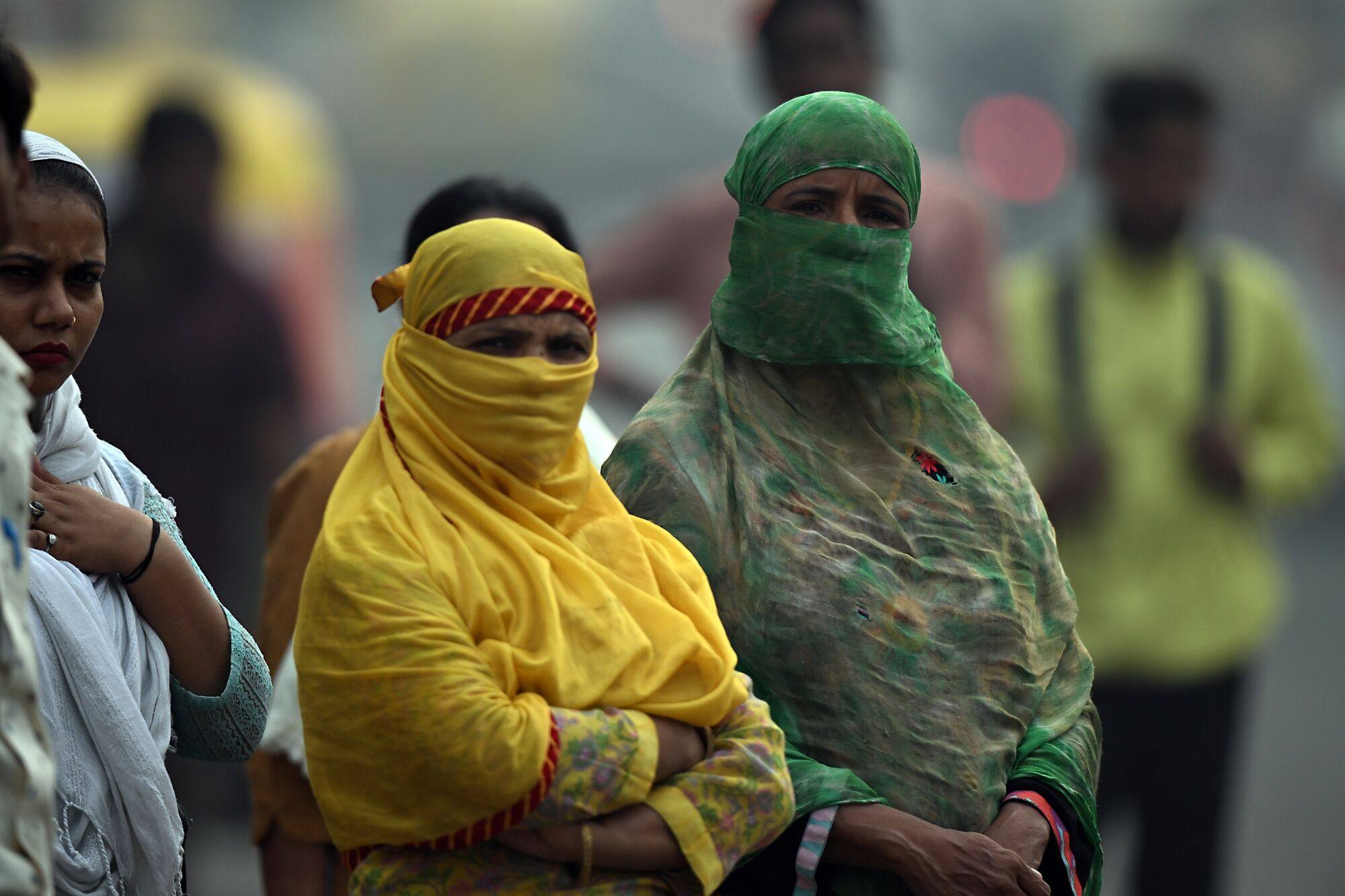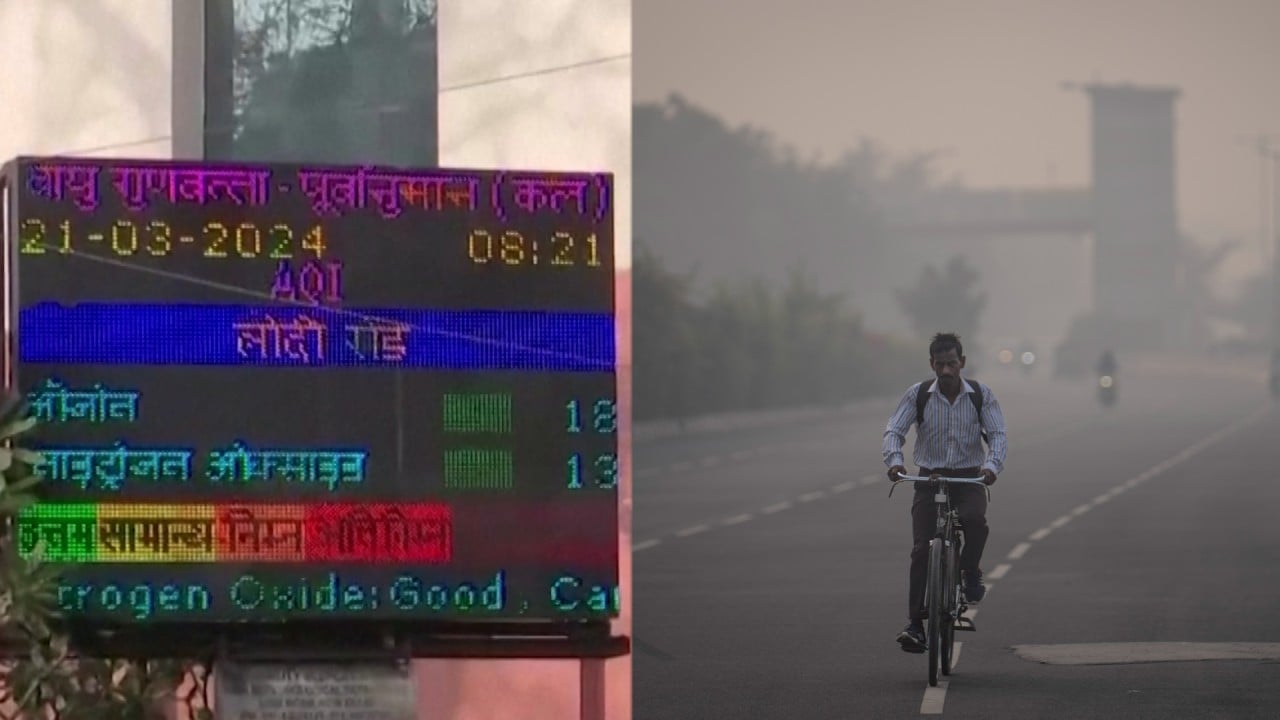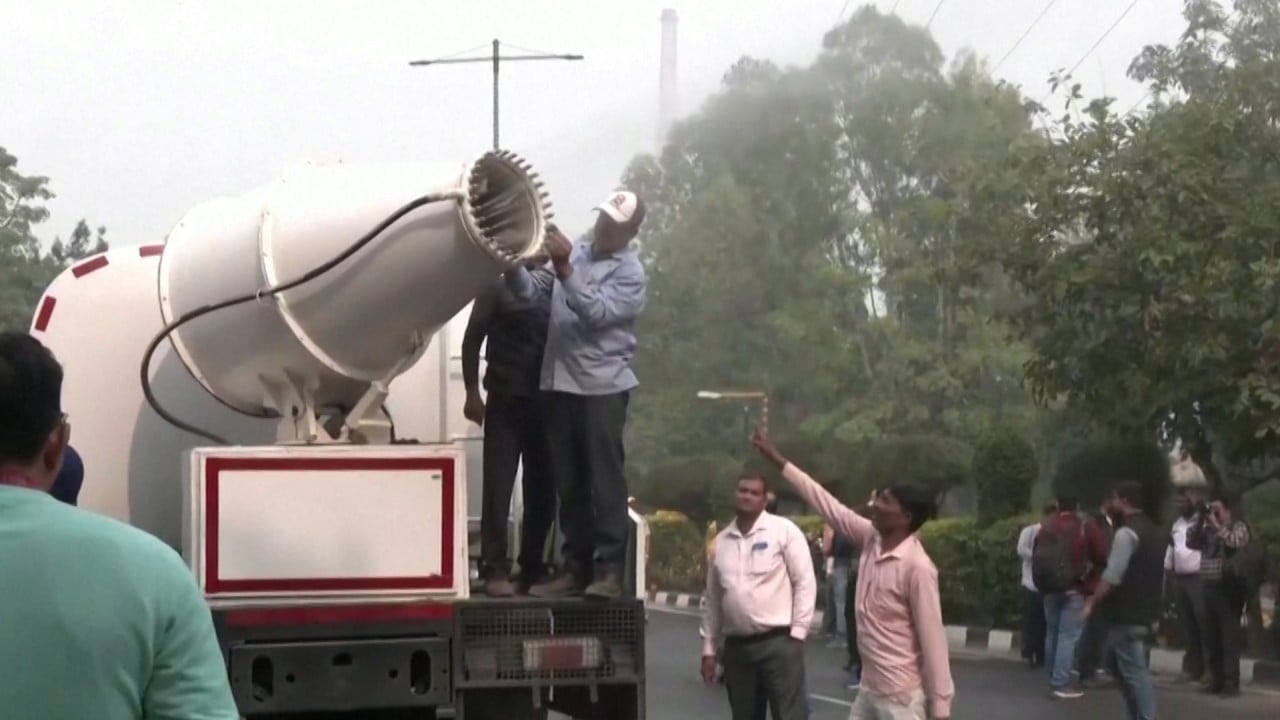
The Chinese lesson to India: how can air pollution make or break your economy?
- The extreme air pollution affecting India is shortening people’s life expectancy by almost six years
- The country is now taking steps to address the issue, while trying not to compromise on economic growth
While stories of air pollution in Delhi resemble “Beijing from 20 years ago” to climate policy expert Saurabh Jain-Punamiya, the Delhi problem has grown into a pan-India problem, with air pollution cutting almost six years off the life expectancy of the country’s residents.
“The correlation between economic activity and pollution is very clear for all of us to see,” he said, but he asserted that setting aside pollution to achieve GDP growth is “unacceptable”.
“We’re doing it at a speed no other country has done, except China,” he said.
Over the past decade, China has rapidly improved its air quality while continuing to grow its economy. And now, the lessons it learned in pursuit of blue skies could offer an example to other developing nations like India.
Just by transitioning away from polluting energy sources, by 2030 India could reduce its PM2.5 – the most harmful small particles and a key indicator of air pollution – by 20 per cent, said energy investment analyst Siddharth Singh at the International Energy Agency.
“Any trade-offs that might exist between development and the emission reductions are slowly disappearing. Today, clean energy sources provide quality jobs and economic growth directly, and reduce the burden of poor health indirectly.”
Karthik Ganesan, a fellow and director (research coordination) at the Council on Energy, Environment and Water in New Delhi, said poor air quality, as much as it impacts human health, has an equally large impact on the economic output of the country and India must address it on a war footing.
“Even without attaining the levels of industrialisation of China, unfortunately, we have already gone down the path where we have air pollution at very dangerous levels,” he said.
“A lot of pollution is not necessarily coming from industrial activity; it is coming from consumption and poor waste management.”
India can most certainly improve air quality while maintaining the use of fossil fuels, but in the long run, cleaner energy sources are likely to be the more cost-effective way to keep India’s air clean, he said.

A 2022 peer-reviewed study found that residential fuel usage was the largest air pollution source in India.
In rural China, in 2012 clean fuels were already being used in half the cooking, while in rural India, the uptake of liquefied petroleum gas (LPG) grew from around 20 per cent in 2000 to 60 per cent in 2020, the researchers said.
The team, based in Punjab, said residential biofuel usage in India is likely to be phased out by 2035, and open waste burning is projected to become the country’s largest source of air pollution by the same year.
While India can improve its air quality, Michael Greenstone, economics professor and director of the Energy Policy Institute at the University of Chicago, said it is challenging to “find regulatory tools that work and that are consistent with the urgent and vital need for continued, rapid economic growth”.
But moving to market-based approaches such as pollution markets or taxes has shown major promise.
Greenstone, whose research inspired the Air Quality Life Index (AQLI) which links air quality with life expectancy, has been involved in an “exciting” initiative by the state government of Gujarat called India Clean Air Markets.
The state ran a randomised experiment where firms were either regulated under the existing rules or by the new cap and trade regulations. The new regulations came out as the clear winner.
“Pollution went down by 20 to 30 per cent, and industries’ compliance costs went down,” Greenstone said.
“The current form of regulation is so costly for polluters,” he said. By India moving to a more environmentally conscious market approach, it can “facilitate faster economic growth by reducing the cost to industry”.
It is an approach that has been widely used in developed countries like the United States, but the Gujarat initiative has shown it is also effective in India, according to Greenstone.
“There is a remarkable opportunity sitting there to be grabbed that will allow for faster economic growth and allow for people to live in a cleaner and healthier environment,” he said.
Providing information can also develop political will to address air quality, which is what Greenstone hopes to achieve with the AQLI, which uses satellite air quality data to form an index of average global life expectancy loss due to air pollution.
“Economic growth is great, but it is a limited measure,” he said, adding that “if you are making everyone sick” and reducing the length of their lives, these are real human costs.
Our economies are driven by people powering them. Continuous exposure to air pollution is really damaging to people’s health
In India, public awareness on how air pollution impacts people’s daily lives is growing. Long-term issues are surfacing, such as chronic diseases and their economic repercussions, according to Pallavi Pant, head of global health at the Health Effects Institute, an independent research organisation in Boston.
“[China offers] a clear example of where you decided this is a problem and started putting people, power, resources and science into it.
“India is slowly going there and consolidating how policymaking across different sectors, ministries and departments happen so that air pollution starts to be something that is taken into consideration at various levels of decision-making,” Pant said.
“Our path is perhaps a little bit slower, but it’s headed in a similar direction.”
She pointed to China’s watershed moment in 2013 when public outcry following frequent and widespread air pollution in the previous autumn and winter seasons in northern China led to a turning point for the country’s air pollution governance.
A massive air quality monitoring network was also set up to collect a huge quantity of environmental data across the country.

“It was a visible problem – people were getting affected and we needed to deal with it. India has had similar moments which have led to some changes,” Pant said, pointing to India’s 2019 National Clean Air Programme, a five-year action plan to combat air pollution in more than 100 cities.
“It is less ambitious in some ways compared to the programme in China,” Pant said. “But for the first time it started to bring real attention to the issue of air pollution, not just at the national level – but also what the states and cities individually will do.”
Bhargav Krishna, a fellow at Sustainable Futures Collaborative, an independent research organisation based in New Delhi, said health professionals in India are struggling to make the case for health to be a key factor in air pollution policymaking alongside technology availability and finances.
The environmental health and policy researcher said while the scientific community has scaled up substantially in the past years, the lack of access to high-quality local health data is hindering public health research.
“We need accurate data to be able to do effective costing studies which we lack. The research ecosystem really is not up to scratch to be able to support interventions right now,” he said.
“[In China] new studies are coming out all the time. Part of that is supported by the open availability of health data and air quality data. That remains a big challenge here – the quality and utility of health data in India are still a question mark.”
Krishna said the health effects and life lost to air pollution are yet to be seen in economic terms, pointing to a countrywide study by more than 100 researchers in the India State-Level Disease Burden Initiative Air Pollution Collaborators published in 2020.
They warned at the time that “the high burden of death and disease due to air pollution and its associated substantial adverse economic impact from loss of output could impede India’s aspiration to be a [US]$5 trillion economy by 2024”. India’s current GDP size is US$4.11 trillion, according to Forbes India.
Krishna said generating primary research in India is still expensive, supported mainly by international donors.
“We are talking on the orders of millions of dollars over five to six years to be able to conduct some of this work,” he said. “The Indian ecosystem has been trying to support this by having mutually beneficial arrangements with, say, institutions in the US or Britain [for] collaborative research.”
A Chinese study published in the peer-reviewed Journal of Environmental Economics and Management last year found that air pollution has had an impact on innovation.
“Severe air pollution can damage human capital, thereby reducing the production of patents in a country or region,” said Wang Chunhua, corresponding author and professor of economics at Shanghai Jiao Tong University.
The team found a corresponding 1.1 per cent decrease in patents and deteriorating air quality in China between 2006 and 2010. However, from 2011-2015, the number of patents increased by 2.2 per cent. China began reducing its PM2.5 concentrations in 2013.
China’s experience shows that “when pollution levels are high, the net benefits of improving air quality may be greater”, making it necessary to use policy tools and enforcement “based on national conditions,” Wang said.
While there may be trade-offs, such as costs, to improving air quality, “the positive impact of air quality on innovation, and thus long-term economic growth” should be considered, he added.
“Air pollution is becoming more acute in India while China has accumulated much experience in the past two decades in cleaning up the environment,” he said.
“Political leaders must demonstrate their wisdom and willingness to seek cooperation for the benefits of both nations.”
At present, he said, China has not been forthcoming about how its air quality transition really happened and what the human cost was – a story that the country needs to tell “more willingly”.
If China is able to exchange this information with India, it would be “game-changing”, according to Jain-Punimaya. In fact, he said, cooperation with China and other Brics nations is “probably the greatest collaboration waiting to happen”.






